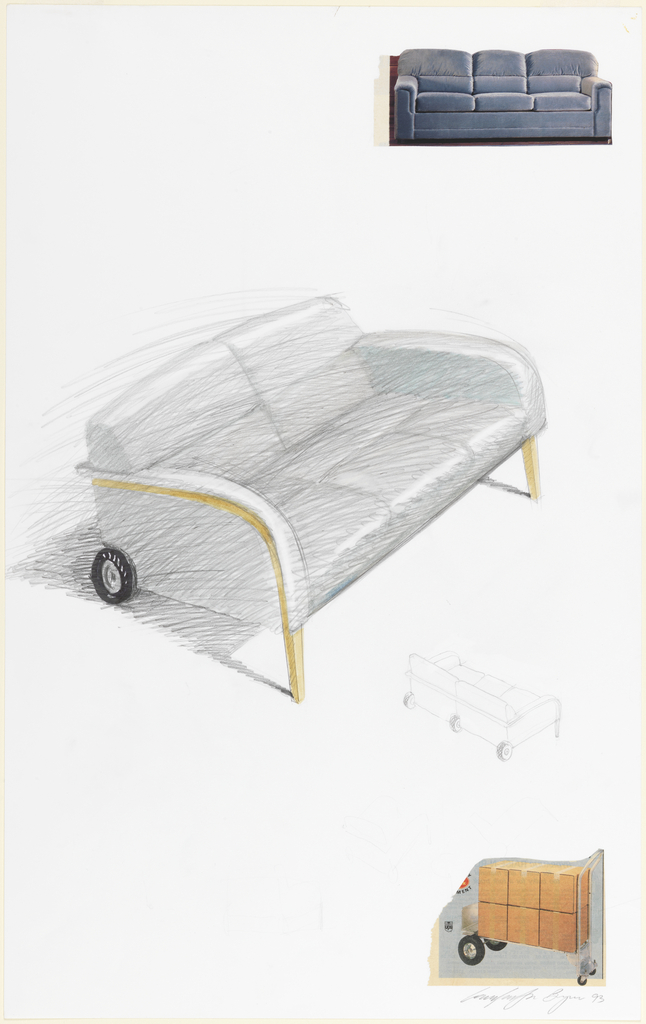Sometimes it’s the seemingly insignificant that holds the most meaning. This is not only true of this drawing by industrial designer Constantin Boym; it is also true of Boym’s design philosophy as he takes notice of that which commonly goes unnoticed. Front and center in this drawing is a design for a gray upholstered sofa with wooden arms and rubber wheels. In the upper and lower right corners are two small pictures that have been cut from the Sears Roebuck catalog. It is in these small glued-on pictures that we find Boym’s inspiration and the real substance of his design. Boym emigrated to America from Russia in 1981 and established himself as an industrial designer. In 1991, he spent a week in Maine with Vitaly Komar and Alex Melamid, two other Russian-American conceptual artists. One night, they became aware of the unremarkable interior of their rented house. They described it as a “uniquely American vernacular” with “grain paneling, brown shag carpeting, and traditional furniture.”[1] At the heart of that interior – and at the heart of America, they reasoned – was Sears. Dependable, practical, comfortable Sears. Simply put by Boym, “Some things are beautiful. Some things are ugly. Some things are Searsy.”[2] The trio embarked on the Searstyle project. They attempted to inject the visual and emotional qualities of Sears into contemporary furniture design by reusing and reinventing the ordinary, the commonplace, and the ignored. They ordered a selection of replacement furniture components from the catalog and united them in innovative and unexpected, yet aesthetically familiar ways. In this drawing, Boym’s design combines Sears sofa cushions, trolley wheels, and a structural wooden frame to create a stylish rolling sofa (and club chair). Boym, Komar, and Melamid applied Searstyle to a range of objects and exhibited them at Fullscale Gallery in New York City in 1992. However, as a movement it never caught on. Only a select number of pieces were made to order, the most notable being for Philippe Starck’s restaurant Teatriz in Mexico City. Searstyle, as illustrated in this drawing, embodies Boym’s philosophy and encourages us to look at the overlooked. It reminds us to consider that everything we see, interact with, and use in our daily lives is, despite familiarity and sometimes appearances, ‘designed’ and a reflection of our culture.
